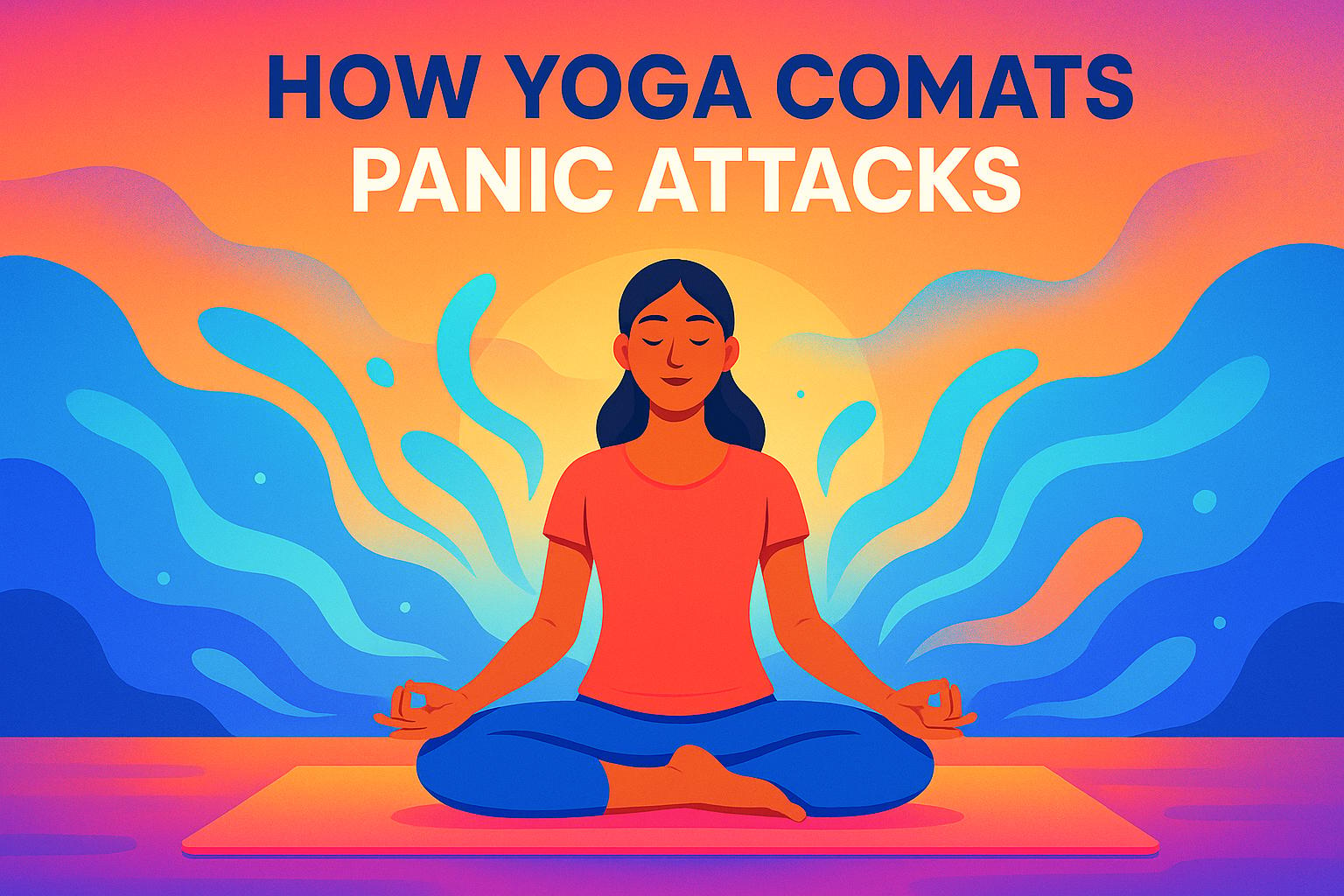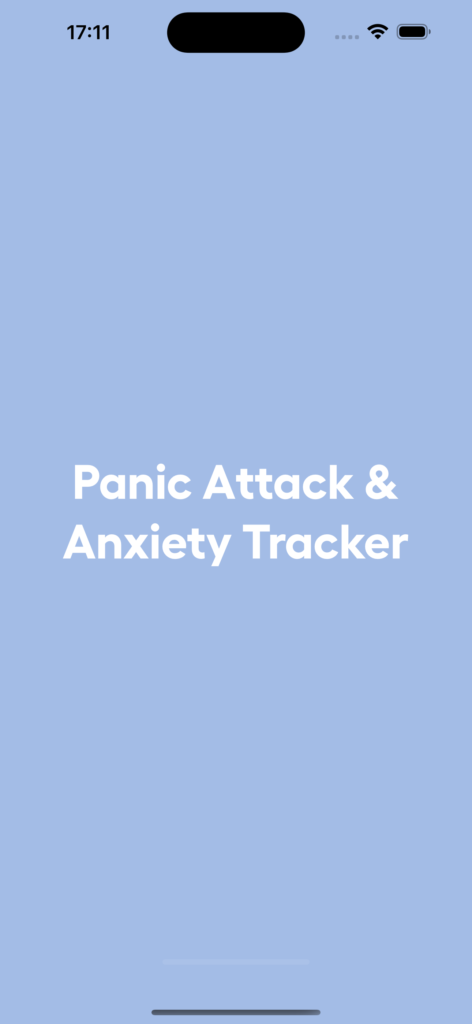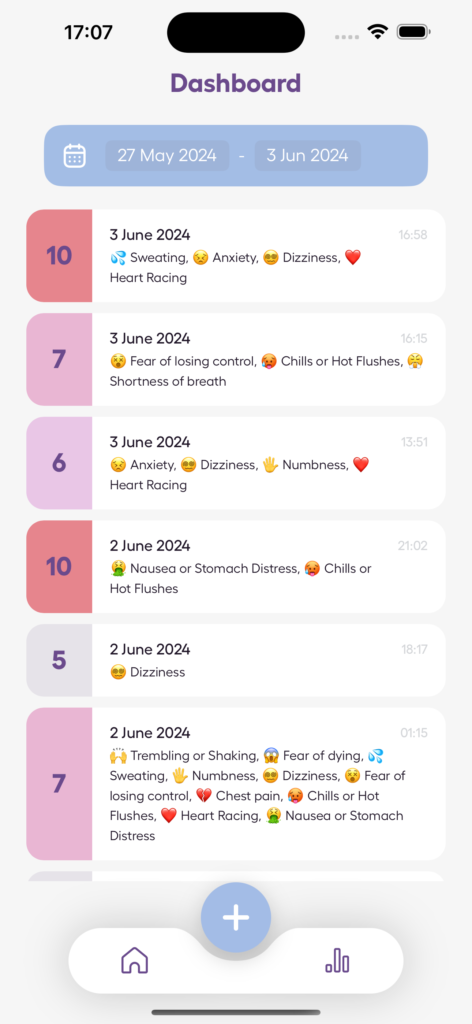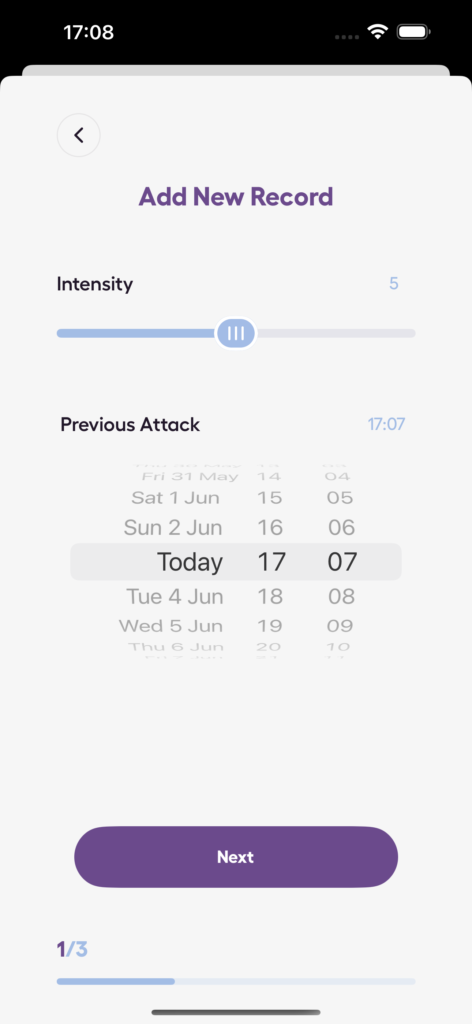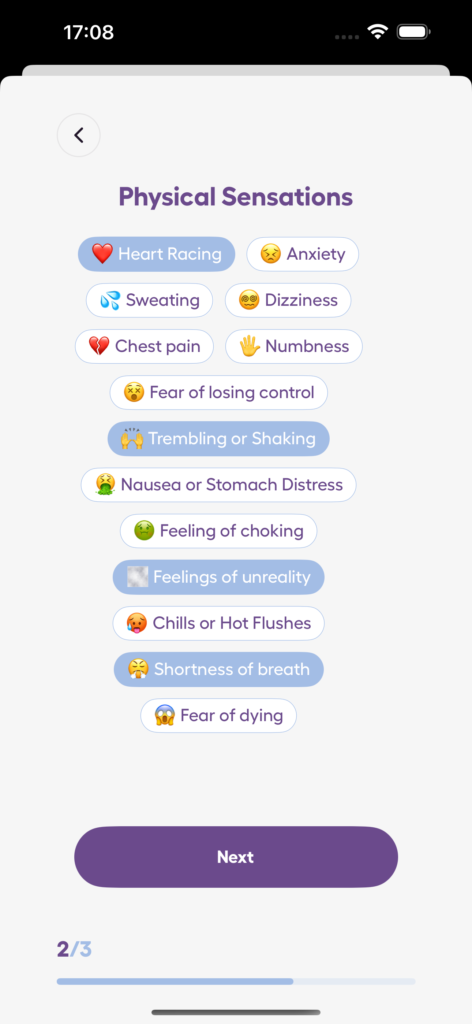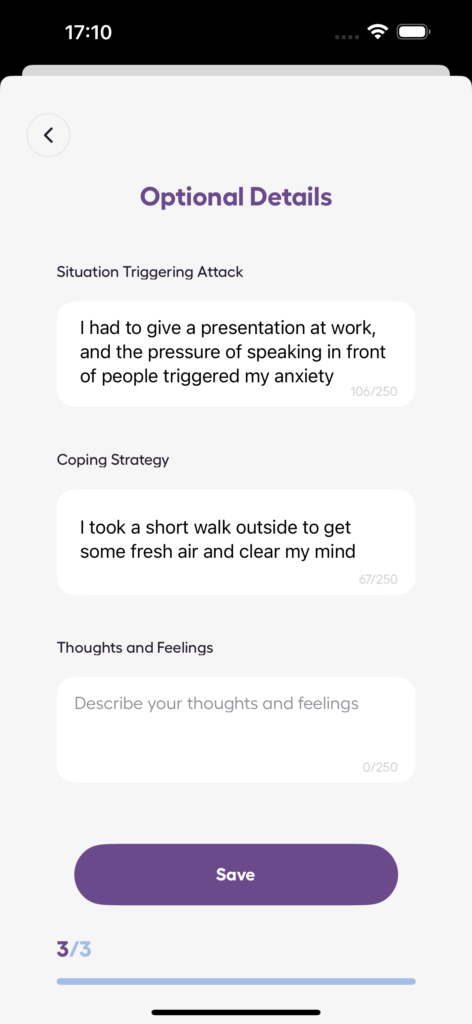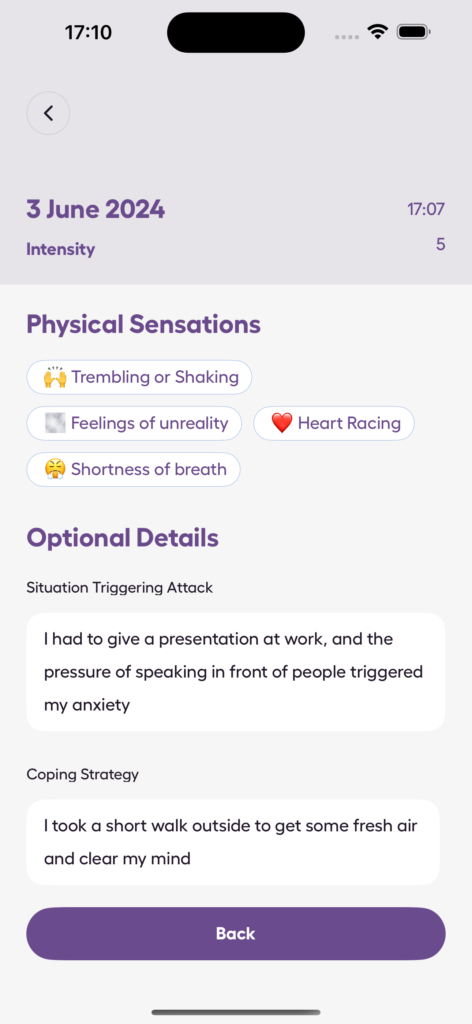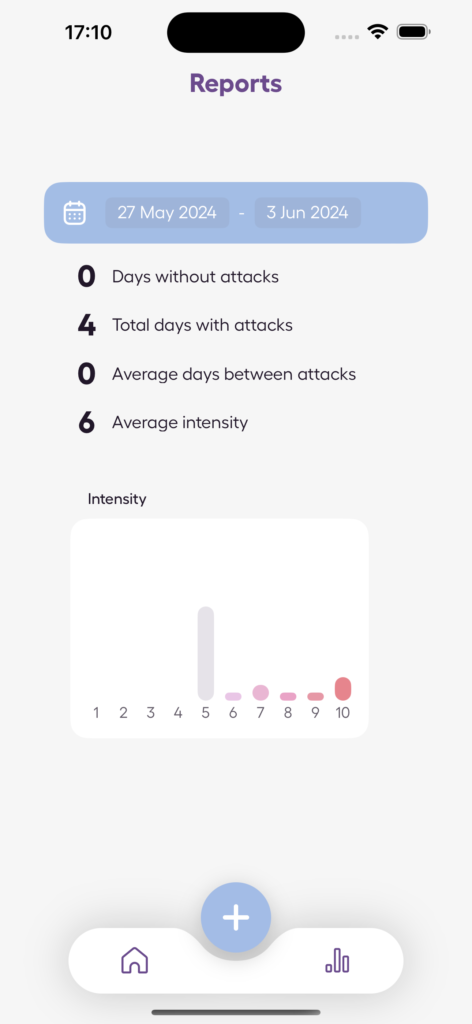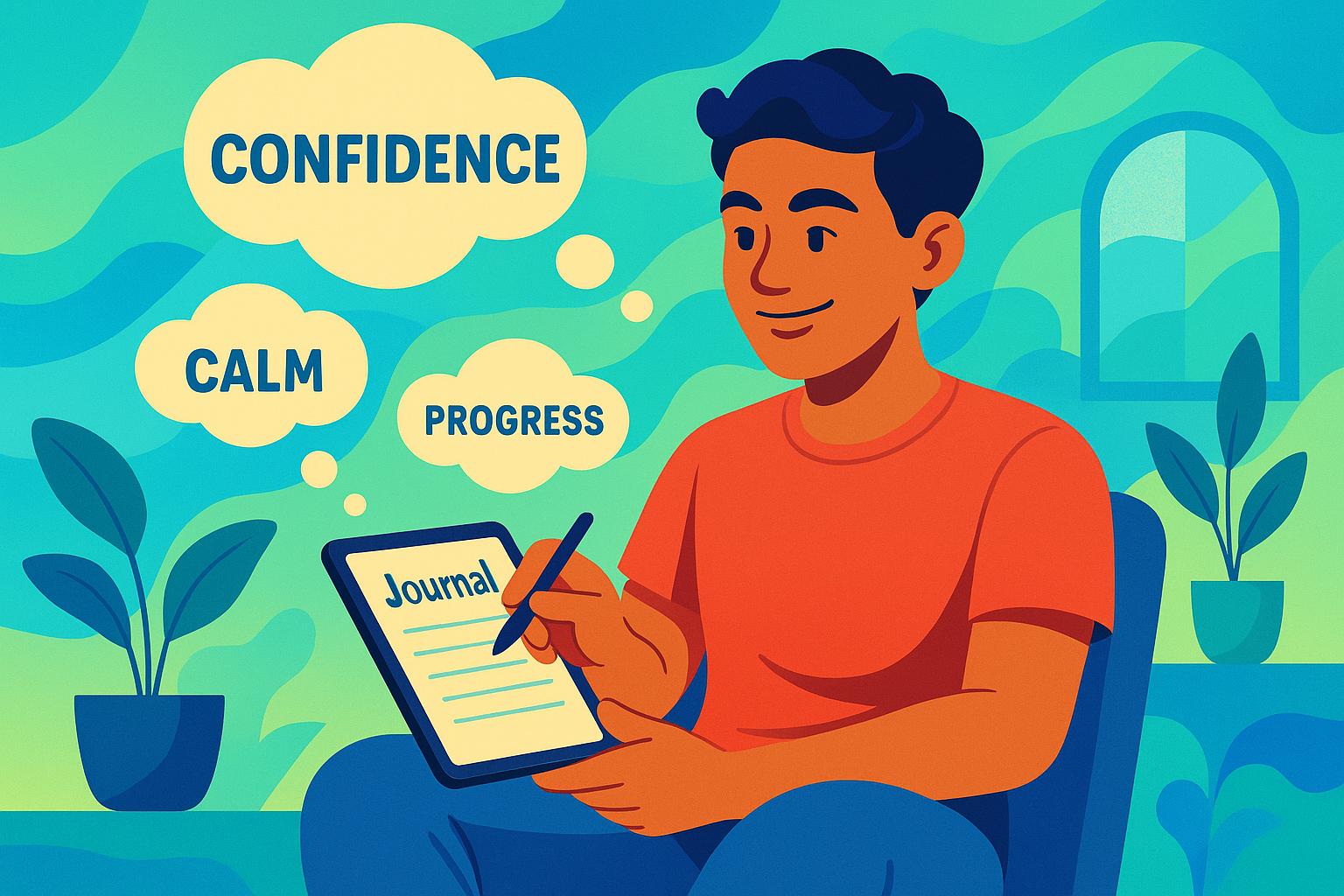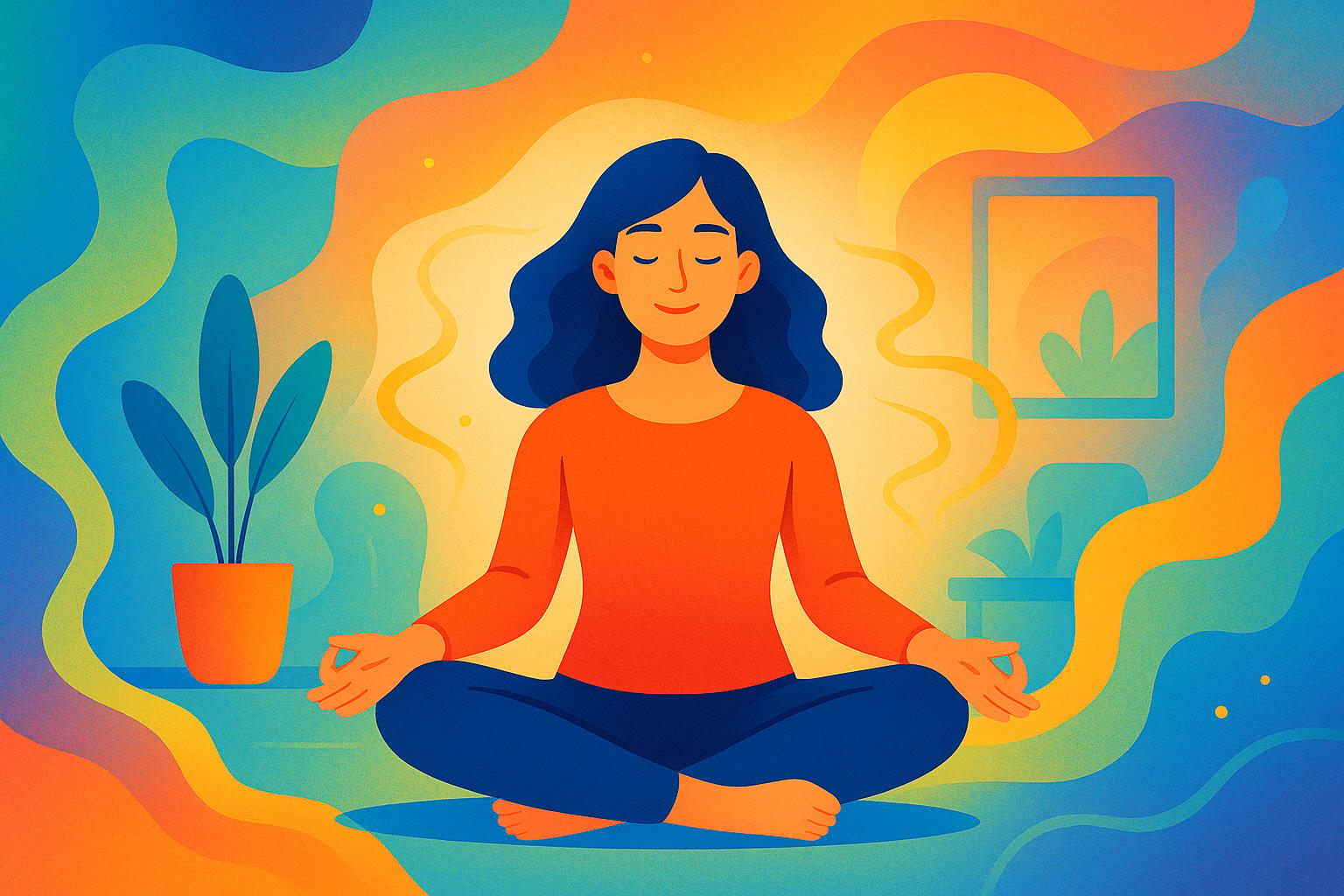Yoga can help manage panic attacks by calming the nervous system and reducing stress responses. Panic attacks often trigger the fight-or-flight mode, leading to rapid heart rate, shallow breathing, and overwhelming fear. Yoga techniques like controlled breathing, gentle poses, and mindfulness activate the parasympathetic system, promoting relaxation and balance.
Key takeaways:
- Breathing techniques like diaphragmatic breathing and 4-7-8 breathing can interrupt panic symptoms.
- Calming poses such as Child’s Pose and Legs-Up-the-Wall ease physical tension and promote relaxation.
- Regular practice trains the body to handle stress better over time.
- Combining yoga with tracking tools like an anxiety journal can help identify triggers and monitor progress.
Start small – just a few minutes daily can make a difference in managing anxiety and building resilience.
Yoga for Anxiety and Panic Attacks | Breathing Exercises and Yoga Poses to Calm Your Nervous System
What Are Panic Attacks and How Do They Affect You
Panic attacks are sudden bursts of intense fear that strike without any real danger, setting off your body’s natural defense mechanisms. The tricky part? Your body doesn’t differentiate between an actual threat and a perceived one, so it reacts as if you’re in immediate danger, even when you’re not.
Knowing what’s happening during these episodes can make a big difference in how you handle them. Panic attacks go far beyond general stress – they’re complex events that involve your entire nervous system. Let’s break down what’s happening and how it impacts both your mind and body.
What Happens During a Panic Attack
When a panic attack hits, your body’s fight-or-flight response kicks into high gear. This response floods your system with adrenaline, preparing you to either confront the danger or escape it. The problem? There’s often no actual emergency.
The physical symptoms can be intense and immediate. Your heart races, your breathing becomes shallow or rapid, and you might feel sweaty or flushed. Some people also experience dizziness, chest pain, or even a choking sensation.
But it’s not just physical. The mental and emotional symptoms can be just as overwhelming. You might feel like you’re losing control, sense an impending disaster, or experience a disconnect from reality – known as derealization or depersonalization. These symptoms typically peak within minutes but can feel much longer as your nervous system stays on high alert.
How Anxiety, Panic Attacks, and Stress Connect
Now, let’s look at how stress and anxiety tie into this. Chronic stress primes your nervous system, making it overly sensitive to even minor triggers. This heightened state means your body is always on edge, ready to react.
Anxiety adds another layer. It’s that constant worry about what might happen, which keeps your mind racing and your body tense. Together, chronic stress and anxiety create a cycle: stress makes you more vulnerable to panic attacks, and having panic attacks increases your anxiety. This cycle can leave you constantly worrying about when the next attack will strike, which only feeds the stress further.
Here’s where understanding your nervous system becomes crucial. Your body’s stress response is controlled by two main systems: the sympathetic system (responsible for fight-or-flight) and the parasympathetic system (which promotes rest and recovery). Panic attacks occur when the sympathetic system goes into overdrive. To break the cycle, you need to activate the parasympathetic system, signaling your body that it’s safe to relax.
Techniques like controlled breathing, mindfulness, and gentle movement are particularly effective here. They send calming signals to your brain, helping to shift your body out of fight-or-flight mode. Practices like yoga work well because they combine these elements, promoting balance and helping your nervous system reset. Understanding how these methods work can empower you to take meaningful steps toward managing panic attacks.
Why Yoga Works for Panic Attack Relief
Yoga is an effective way to ease panic attacks by calming an overstimulated nervous system. When a panic attack occurs, it activates the body’s fight-or-flight response. Yoga, on the other hand, promotes the activation of the parasympathetic nervous system – often called the "rest and digest" state – which helps balance out this heightened response. By practicing yoga regularly, your body can shift out of emergency mode, leading to lower cortisol levels, a steadier heart rate, and reduced blood pressure.
Research on Yoga for Anxiety Management
Studies on individuals with panic disorders reveal that yoga can significantly reduce feelings of anxiety and physical symptoms associated with it. Research also suggests that combining yoga with cognitive-behavioral therapy can enhance these positive effects even further. Additional findings point to metabolic changes, such as decreased catecholamine secretion and lower oxygen consumption, which contribute to a calmer physiological state. For instance, pranayama breathing techniques may help desensitize CO₂ chemoreceptors in the brainstem, which can result in a slower heart rate even outside of yoga sessions. Over time, regular yoga practitioners seem less likely to develop anxiety disorders and are better equipped to handle negative emotions adaptively.
How Breathing and Movement Help
Yoga’s combination of intentional breathing and mindful movement plays a key role in managing stress responses. Deep, diaphragmatic breathing sends signals of safety to the brain, increasing vagal tone, which helps slow your heart rate and ease the fight-or-flight response. Meanwhile, gentle and deliberate movements work alongside these breathing exercises to regulate stress levels and stabilize emotions without overwhelming the body. Specific poses like Child’s Pose, Legs-Up-the-Wall, and Corpse Pose are particularly effective in activating the parasympathetic nervous system, triggering a chain reaction of calming effects throughout the body. By balancing the interplay between the sympathetic and parasympathetic systems and influencing the hypothalamic-pituitary-adrenal axis, yoga addresses the root causes of panic attacks. This holistic approach not only alleviates immediate symptoms but also helps reduce anticipatory anxiety, giving you a greater sense of control during stressful situations.
sbb-itb-b1dedcc
Yoga Poses and Breathing Techniques for Panic Attack Relief
When panic hits, it can feel like the world is spinning out of control. But certain yoga poses and breathing exercises can help you find your footing again. These techniques work by activating your body’s natural relaxation response, offering a way to calm your mind and ease physical tension. The best part? They’re simple enough to use even in the middle of overwhelming moments.
Best Yoga Poses for Calming Your Mind and Body
Child’s Pose (Balasana) is a go-to for easing anxiety. Start by kneeling with your big toes touching and sitting back on your heels. Open your knees to about hip-width and fold forward, letting your forehead rest on the ground. Your arms can stretch out in front of you or rest alongside your body. This pose gently stretches your lower back and hips while encouraging slower, steadier breathing.
Legs-Up-the-Wall Pose (Viparita Karani) is perfect for releasing tension and improving circulation. Lie on your back close to a wall and extend your legs upward, forming an L-shape. Let your arms rest by your sides with palms facing up. This easy inversion is especially helpful during intense anxiety, as it promotes relaxation and reduces stress in the lower body.
Reclining Bound Angle Pose (Supta Baddha Konasana) helps open your chest and encourages deeper breaths. Lie on your back, bring the soles of your feet together, and let your knees fall open to the sides. You can place your hands on your belly or stretch them out to your sides. For extra comfort, use pillows or blocks to support your knees. This pose is excellent for creating space in your chest and inviting a sense of calm.
Corpse Pose (Savasana) is simple but incredibly effective. Lie flat on your back with your legs slightly apart and arms relaxed at your sides, palms up. Close your eyes and focus on releasing tension from your body, starting at your toes and moving upward. This pose is all about letting go and allowing your body to relax completely.
Cat-Cow Stretch (Marjaryasana-Bitilasana) combines gentle movement with rhythmic breathing to release tension in your spine and neck. Begin on your hands and knees in a tabletop position. As you inhale, arch your back, lifting your chest and tailbone (Cow Pose). On the exhale, round your spine and tuck your chin toward your chest (Cat Pose). Repeat this flow for several breaths to ease both physical and mental stress.
Pairing these poses with intentional breathing can amplify their calming effects.
Breathing Techniques to Stop or Prevent Panic Attacks
Diaphragmatic Breathing is a foundational method to regain control. Place one hand on your chest and the other just below your ribcage. Breathe in deeply through your nose, letting your belly rise while keeping your chest still. Exhale slowly through your mouth, gently pressing on your belly to release the air. Start with 5–10 cycles and increase as it feels natural. This technique counters the rapid, shallow breathing that often comes with panic.
4-7-8 Breathing provides focus when you’re feeling overwhelmed. Inhale through your nose for a count of 4, hold your breath for 7 counts, and exhale through your mouth for 8 counts, making a soft whooshing sound. Begin with 3–4 cycles and gradually work up to 8. The extended exhale helps engage your parasympathetic nervous system, promoting relaxation.
Box Breathing uses a balanced rhythm to create calm. Inhale through your nose for 4 counts, hold for 4 counts, exhale through your mouth for 4 counts, and pause for 4 counts before starting again. Visualizing the sides of a square as you breathe can make this technique even more grounding.
Belly Breathing with Extended Exhales targets the fight-or-flight response. Place both hands on your belly and breathe in for 3 counts, letting your belly expand. Then, exhale slowly for 6 counts, pressing your hands down as you empty your lungs. The longer exhale signals safety to your nervous system, helping to lower your heart rate. Regular practice can make this response second nature during stress.
Alternate Nostril Breathing (Nadi Shodhana) is excellent for balancing your nervous system. Use your right thumb to close your right nostril and inhale through your left nostril for 4 counts. Close your left nostril with your ring finger, release your thumb, and exhale through your right nostril for 4 counts. Then inhale through your right nostril and switch to exhale through your left. Repeat for 5–10 rounds. This technique is particularly helpful for easing anticipatory anxiety and can be a part of your daily routine.
The key to these practices is consistency. By practicing them regularly when you’re calm, you’ll be better equipped to use them effectively when panic strikes.
Using Yoga with Self-Monitoring Tools for Long-Term Results
Yoga, with its combination of poses and breathing techniques, is a powerful tool for immediate relief during moments of panic. But if you’re aiming for lasting results, it’s about more than just those quick fixes. Real change comes from combining yoga with daily practice, self-awareness, and tracking your progress. By pairing yoga with self-monitoring tools, you can better understand your stress triggers and make meaningful, long-term improvements.
Why Self-Awareness and Consistency Matter
Practicing yoga regularly – just 10 to 15 minutes a day – can help train your nervous system to handle stress more effectively. Over time, you’ll start recognizing the early signs of anxiety and can use yoga techniques to calm yourself before things spiral.
Here’s the thing: consistency beats perfection. You don’t need to nail every pose or master complex breathing techniques right away. What matters most is showing up daily. Even a simple two-minute breathing exercise, done consistently, can shift how you respond to stress. Recovery isn’t linear, and some days will feel harder than others. But sticking with it makes all the difference.
Using the Anxiety Journal App to Track Your Progress
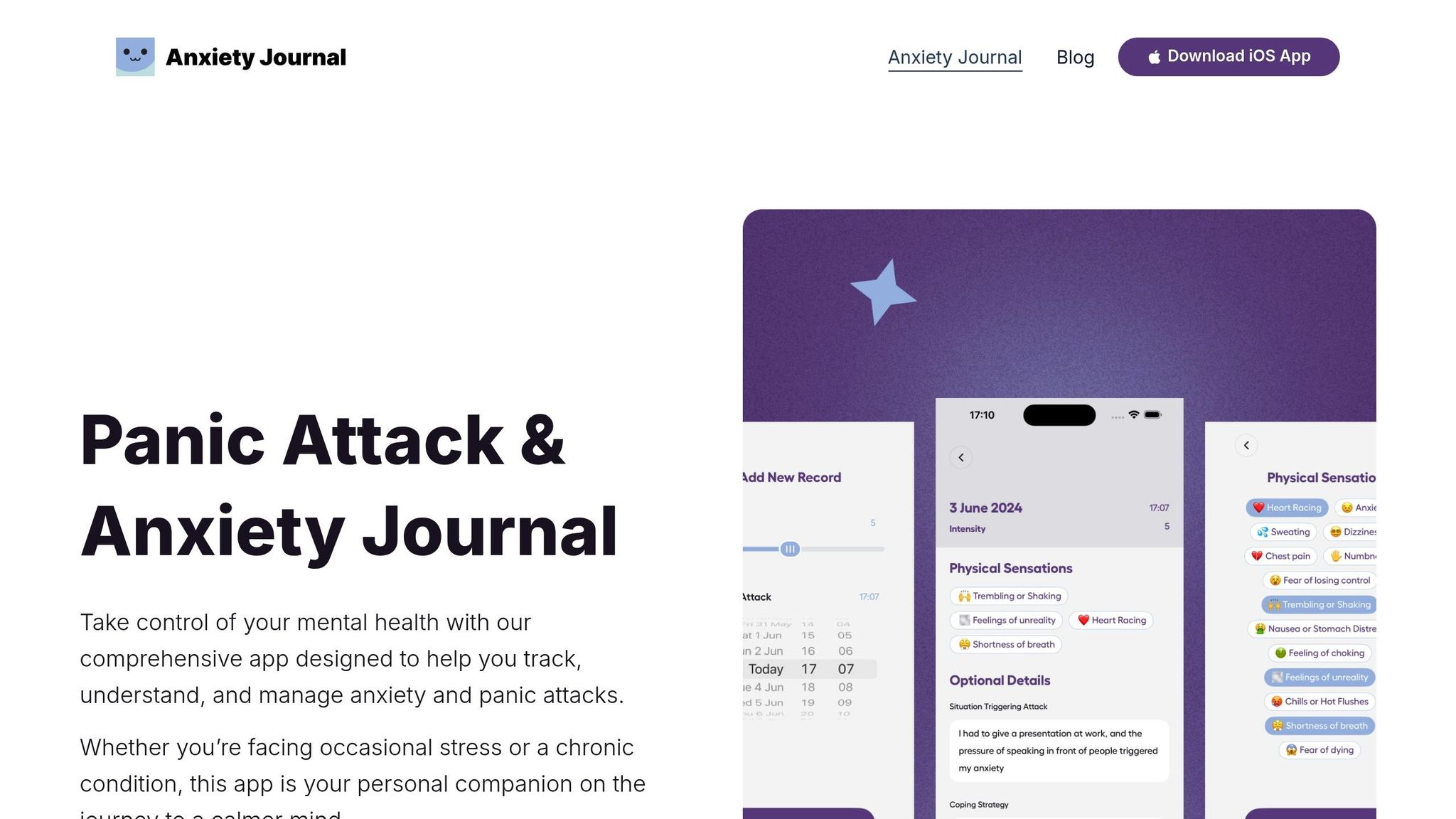
Tracking your experiences can amplify the benefits of your yoga practice. A tool like the Anxiety Journal app helps you log panic attacks, monitor stress levels, and see how yoga is impacting your anxiety over time. This kind of self-monitoring makes it easier to spot patterns and refine your approach.
The app’s attack log and new entries feature let you record details about panic episodes, triggers, and daily stress levels. Over time, you might notice recurring stressors or find that certain yoga poses help reduce the intensity of your anxiety. These insights can guide you in tailoring your practice to what works best for you.
Another handy feature is stress level tracking, which helps you identify early warning signs. This gives you a chance to adjust your routine or add calming techniques before stress escalates.
And because privacy is so important, the app is designed to keep your mental health data secure and accessible only to you. You can focus on your progress without worrying about your personal information.
Conclusion: Take Control with Yoga and Self-Management Tools
By blending the techniques and tracking tools we’ve explored, you can take meaningful steps toward managing your anxiety. Yoga, combined with mindful self-monitoring, offers a powerful toolkit for both immediate relief and long-term growth. The breathing exercises and poses we’ve discussed can help you calm down during a panic attack, while regular practice trains your nervous system to respond to stress more effectively over time.
You don’t need to dive in all at once or aim for perfection. Even dedicating just five minutes a day to deep breathing or gentle stretches can make a noticeable difference. The key is consistency – showing up for yourself, even on the tough days.
Consider using the Anxiety Journal app to track your panic attacks, monitor stress levels, and log your yoga sessions. Over time, you’ll begin to see patterns, like how morning yoga helps reduce stress later in the day or which poses work best during anxious moments. These insights can guide your practice and reinforce your progress.
Remember, progress isn’t always a straight line. Some days will feel harder, and that’s okay. The combination of yoga and self-monitoring empowers you to not only manage symptoms but also build resilience and lasting skills to navigate life’s challenges.
Take the first step today. Whether it’s trying a simple breathing exercise or downloading the Anxiety Journal app, every small action brings you closer to better mental health.
FAQs
How does yoga help me recognize and manage panic attack triggers?
Yoga offers a way to better recognize and handle the triggers behind panic attacks by heightening your awareness of physical and emotional signals. Through techniques like controlled breathing and targeted poses, yoga soothes the nervous system, helping you stay centered and respond to stress in a calmer, more composed manner.
Consistent practice also nurtures mindfulness, making it easier to catch the early signs of anxiety and take steps to ease its effects. Over time, this increased self-awareness can help you reduce the likelihood of panic attacks and feel more in charge of your emotional health.
What yoga techniques are best for beginners dealing with frequent panic attacks?
If you’re just starting out with yoga and often deal with panic attacks, gentle poses and basic breathing exercises can be a great way to begin. Poses like Child’s Pose, Legs-Up-The-Wall, and Cat-Cow are particularly helpful for soothing the nervous system and encouraging relaxation.
Breathing techniques such as diaphragmatic breathing, 4-7-8 breathing, and alternate nostril breathing are also worth trying. These methods emphasize slow, deep breaths, which can help ease stress and bring a sense of calm during anxious moments. Yoga provides a gentle, supportive approach to managing panic symptoms while improving overall mental health.
How can yoga and an anxiety journal app work together to improve anxiety management?
Yoga and an anxiety journal app work hand in hand, blending physical relaxation with mental awareness. Yoga helps ease stress, quiet the mind, and promote emotional stability through focused breathing and intentional movements. On the other hand, an anxiety journal app allows you to log triggers, identify patterns, and monitor progress, offering helpful insights into your mental well-being.
When used together, these tools provide a well-rounded approach to managing anxiety. Yoga encourages mindfulness and relaxation, while the journal app supports regular self-reflection and tracking. This pairing not only helps establish healthy routines but also gives you a deeper understanding of your anxiety, paving the way for lasting growth.
